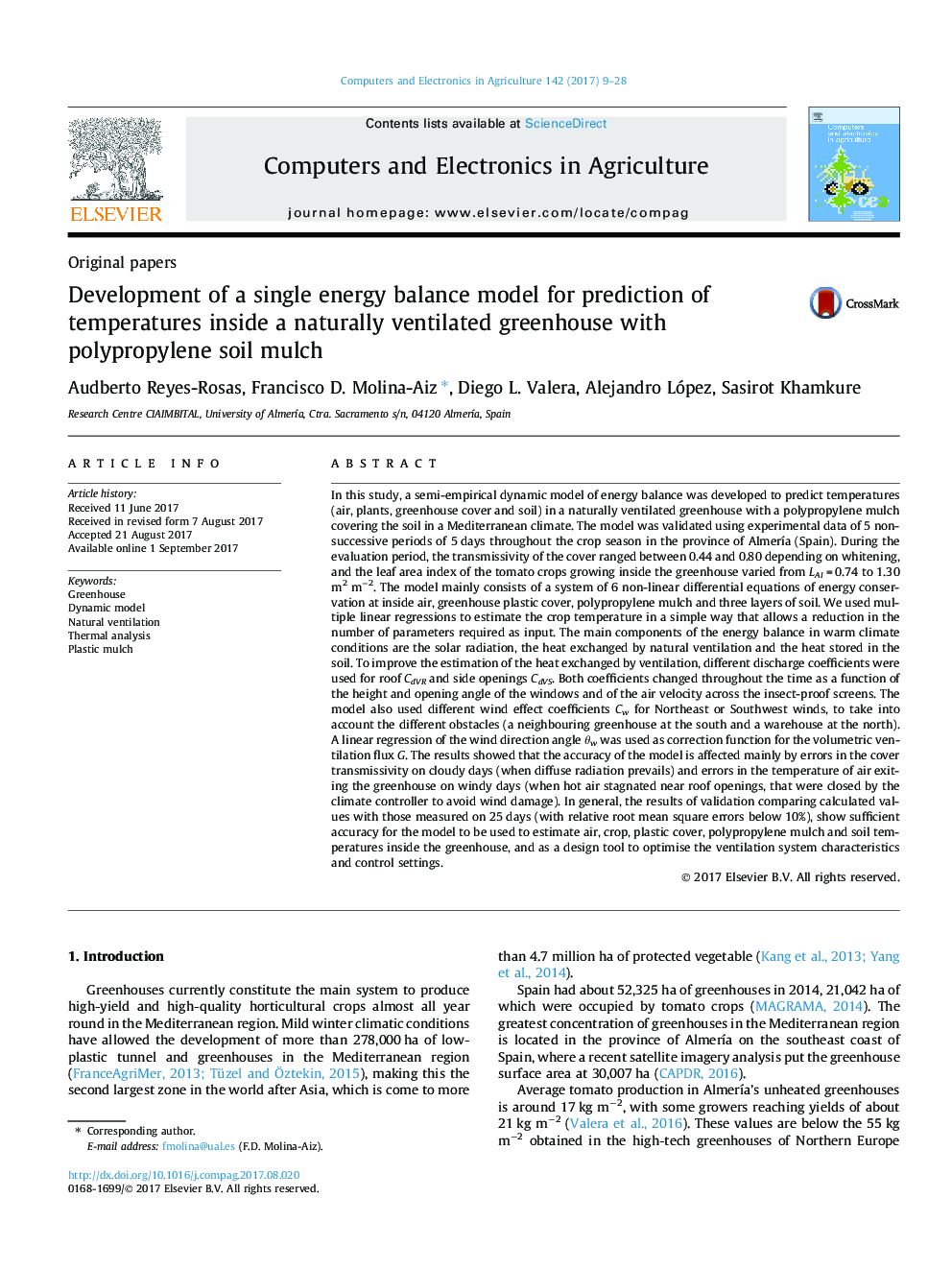| کد مقاله | کد نشریه | سال انتشار | مقاله انگلیسی | نسخه تمام متن |
|---|---|---|---|---|
| 6458645 | 1361745 | 2017 | 20 صفحه PDF | دانلود رایگان |
- Model estimates adequately temperatures along the year in a ventilated greenhouse.
- Improve ventilation modelling with variable discharge and wind effect coefficients.
- Greatest errors in simulated temperatures were observed on cloudy and windy days.
- Multispan greenhouses produce heterogeneity closing openings to avoid wind damage.
In this study, a semi-empirical dynamic model of energy balance was developed to predict temperatures (air, plants, greenhouse cover and soil) in a naturally ventilated greenhouse with a polypropylene mulch covering the soil in a Mediterranean climate. The model was validated using experimental data of 5 non-successive periods of 5 days throughout the crop season in the province of AlmerÃa (Spain). During the evaluation period, the transmissivity of the cover ranged between 0.44 and 0.80 depending on whitening, and the leaf area index of the tomato crops growing inside the greenhouse varied from LAI = 0.74 to 1.30 m2 mâ2. The model mainly consists of a system of 6 non-linear differential equations of energy conservation at inside air, greenhouse plastic cover, polypropylene mulch and three layers of soil. We used multiple linear regressions to estimate the crop temperature in a simple way that allows a reduction in the number of parameters required as input. The main components of the energy balance in warm climate conditions are the solar radiation, the heat exchanged by natural ventilation and the heat stored in the soil. To improve the estimation of the heat exchanged by ventilation, different discharge coefficients were used for roof CdVR and side openings CdVS. Both coefficients changed throughout the time as a function of the height and opening angle of the windows and of the air velocity across the insect-proof screens. The model also used different wind effect coefficients Cw for Northeast or Southwest winds, to take into account the different obstacles (a neighbouring greenhouse at the south and a warehouse at the north). A linear regression of the wind direction angle θw was used as correction function for the volumetric ventilation flux G. The results showed that the accuracy of the model is affected mainly by errors in the cover transmissivity on cloudy days (when diffuse radiation prevails) and errors in the temperature of air exiting the greenhouse on windy days (when hot air stagnated near roof openings, that were closed by the climate controller to avoid wind damage). In general, the results of validation comparing calculated values with those measured on 25 days (with relative root mean square errors below 10%), show sufficient accuracy for the model to be used to estimate air, crop, plastic cover, polypropylene mulch and soil temperatures inside the greenhouse, and as a design tool to optimise the ventilation system characteristics and control settings.
240
Journal: Computers and Electronics in Agriculture - Volume 142, Part A, November 2017, Pages 9-28
